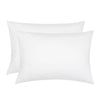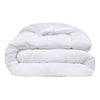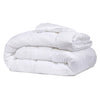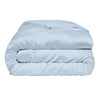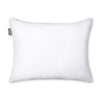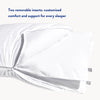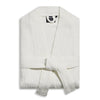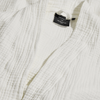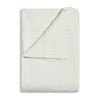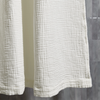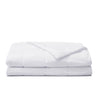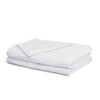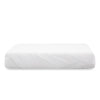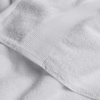The Daily Miracle
The Ultimate Guide On How To Keep Sheets On Bed
Published
June 19, 2025
Author
John Tsenekos

Ever feel like you're in a nightly battle with your bed sheets? You're not alone. Waking up to bunched, tangled, or slipping sheets can be a frustrating way to start (or interrupt) your day. But don't worry, we’ve got you covered, literally. In this guide, we explore why sheets often refuse to stay put, and share simple and effective tips to keep them snugly in place. From choosing the right size sheets to adding a mattress pad and using clever accessories like sheet suspenders, sheet straps, and safety pins, you’ll learn everything you need for a hassle-free, cozy bed setup. Let’s dive in!
What’s Causing Your Sheets To Slip Off The Bed?
If your sheets seem to have a mind of their own, there’s usually a combination of reasons at play. Tossing and turning during the night can tug at fitted sheets, while worn-out elastic in older sheets doesn’t help matters. If you’ve got a pillow-top or tall mattress, standard sheets might not be deep enough to hold securely. On top of that, slippery materials like satin or silk are notorious for their lack of grip. And, let's be honest, using the wrong sheet size is often a big culprit. Addressing these factors can make a world of difference.
How To Keep Sheets On Bed: Finding The Right Sheets
Is there anything worse than waking up to a messy bed? Keeping sheets in place isn’t just about keeping the bedroom neat; it can help improve your sleep quality as well. Snug sheets reduce middle-of-the-night disruptions and give you a calmer morning routine. Plus, a tidy bed just looks and feels more welcoming, doesn’t it? With a little effort, you can create a relaxing space that enhances your comfort and makes those precious hours of sleep even better.
Step 1: Measure Your Mattress Depth
Grabbing the right sheet starts with knowing your mattress size. Measure its depth, especially if it’s a pillow-top or features any extras like a topper. While standard sheets handle depths up to 14 inches, deeper mattresses may need sheets with 16-18 inches or more. Use a tape measure for accuracy; don’t just eyeball it. Trust us, that one inch really matters when it comes to staying secure.
Step 2: Check Length and Width
Once you’ve got the depth sorted, measure your mattress’s length and width. Sizes like Queen (60x80 inches) and King (76x80 inches) are common, but precision is key here. A fitted sheet that’s too big or too small can either bunch up or slip off altogether. Save yourself the hassle with the right fit from the get-go.
Step 3: Consider Sheet Material
Not all sheets are created equal. Materials like jersey knit, with their added stretch, tend to grip mattresses better than slick options like silk. Need something sturdy? Look for fabrics with a tighter weave. Considering the material’s texture and properties makes a big difference in battling slipping sheets.
Step 4: Look for Fully Elasticized Sheets
Here’s a pro tip: go for fitted sheets with fully elasticized hems, and consider adding a mattress pad to enhance comfort and keep everything snug. These provide grip around the entire mattress, not just in the corners. Sheets without full elastic are much more likely to pop off, especially if you move a lot while sleeping. As you shop, give the elastic a quick test for durability. Strong elastic equals less trouble down the road.
Step 5: Account for Mattress Toppers
If you’re using a mattress topper or mattress pad, make sure to include its depth when measuring your mattress. Sheets that fit just the mattress won’t hold steady once you add a topper, compromising your comfort during sleep. Instead, opt for deep-pocket sheets designed to accommodate both. A little attention to detail here avoids plenty of frustration later.
How Do Sheet Straps Work To Keep Fitted Sheets In Place?
Sheet straps (sometimes called bed sheet fasteners) are lifesavers when it comes to keeping slipping sheets in check. These elastic bands clip onto your sheet’s edges and run beneath the mattress, crisscrossing for an even grip. They’re especially handy for taller mattresses or for those who can’t help but move around a lot at night. While not a total magic fix, they significantly reduce slippage. Pair them with well-fitted sheets and sheet suspenders, and you’re golden.
What Are Sheet Clips And Do They Help?
If sheet straps aren’t your thing, sheet clips might do the trick. These little gadgets attach to your sheet’s corners and tuck neatly under the mattress. The best options are adjustable and made from sturdy materials that won’t damage your sheets. They’re easy to use, budget-friendly, and perfect for standard mattresses. While they won’t give as much hold as straps, they’re a quick fix for minor slipping problems.
How Can You Prevent Sheets From Slipping During The Night?
Keeping your sheets secure requires a little know-how, some safety pins, and some trial and error. Start with sheets that fit well and have solid elastic. Opt for grippy materials like jersey knit if silk or satin isn’t working out. Sheet straps or clips are great for an added layer of security. Remember to check the elastic on your sheets regularly. Once it’s worn out, replace it. Even your mattress surface matters. A grippy mattress pad underneath your sheet can help keep everything in place.
Will My Mattress Type Affect How Well My Sheets Stay On?
Absolutely! Some mattresses, like pillow-tops or memory foam models, are thicker and harder to fit with standard sheets. Adjustable beds also make it tricky since their movements can pop off ill-fitted sheets. If your mattress has unique dimensions or depth, deep-pocket sheets and bed accessories like straps are your best bets. Keep your mattress type in mind when shopping, and you'll save yourself a lot of hassle later.
Does Using A Mattress Protector Impact Sheet Fit?
It can, but it doesn’t have to. A snugly fitting mattress protector can even improve sheet security if it adds some texture for extra grip. On the flip side, loose or bulky protectors can cause wrinkles and gaps, making sheets shift more easily. To avoid headaches, pick a protector that fits well and works with your fitted sheet, not against it.
How To Keep Sheets On Bed When You Have A Deep Mattress?
If you’re dealing with a deep mattress, don’t settle for standard sheets. Go for deep-pocket fitted sheets designed to fully cover your mattress. For extra hold, add sheet straps. These create extra tension to keep everything secure. Corner suspenders are another great option for keeping even the trickiest sheets in place. High-quality materials and durable elastic will be your biggest allies here.
Common Reasons Why Sheets Keep Coming Off The Bed
-
Using the Wrong Size Sheets: Sheets that don’t match your mattress dimensions are a recipe for constant slipping.
-
Ignoring Mattress Depth: Deep mattresses need deep-pocket sheets.
-
Overwashing Sheets: Elastic breaks down with over-washing. Keep this in mind to extend the life of your bedding.
-
Neglecting Sheet Straps/Clips: Don’t overlook these simple tools like sheet suspenders; they work!
-
Using Slippery Materials: Silk may feel luxurious, but it’s not always practical. Consider grippier alternatives like cotton or jersey knit.
Conclusion
Tired of wrestling with your bed sheets every day and night? The solution lies in properly sized, deep-pocket sheets, complemented by sheet straps or clips for added security. Combine these tips, and you'll enjoy not just a snug fit but also improved sleep.
Silk is super slippery, so opt for 100% cotton sheets like this high-quality Miracle Made sheet set that includes fitted sheets compatible with mattresses up to 15 inches in depth and featuring elastic all the way around the sheet for a secure fit.
Sources:


